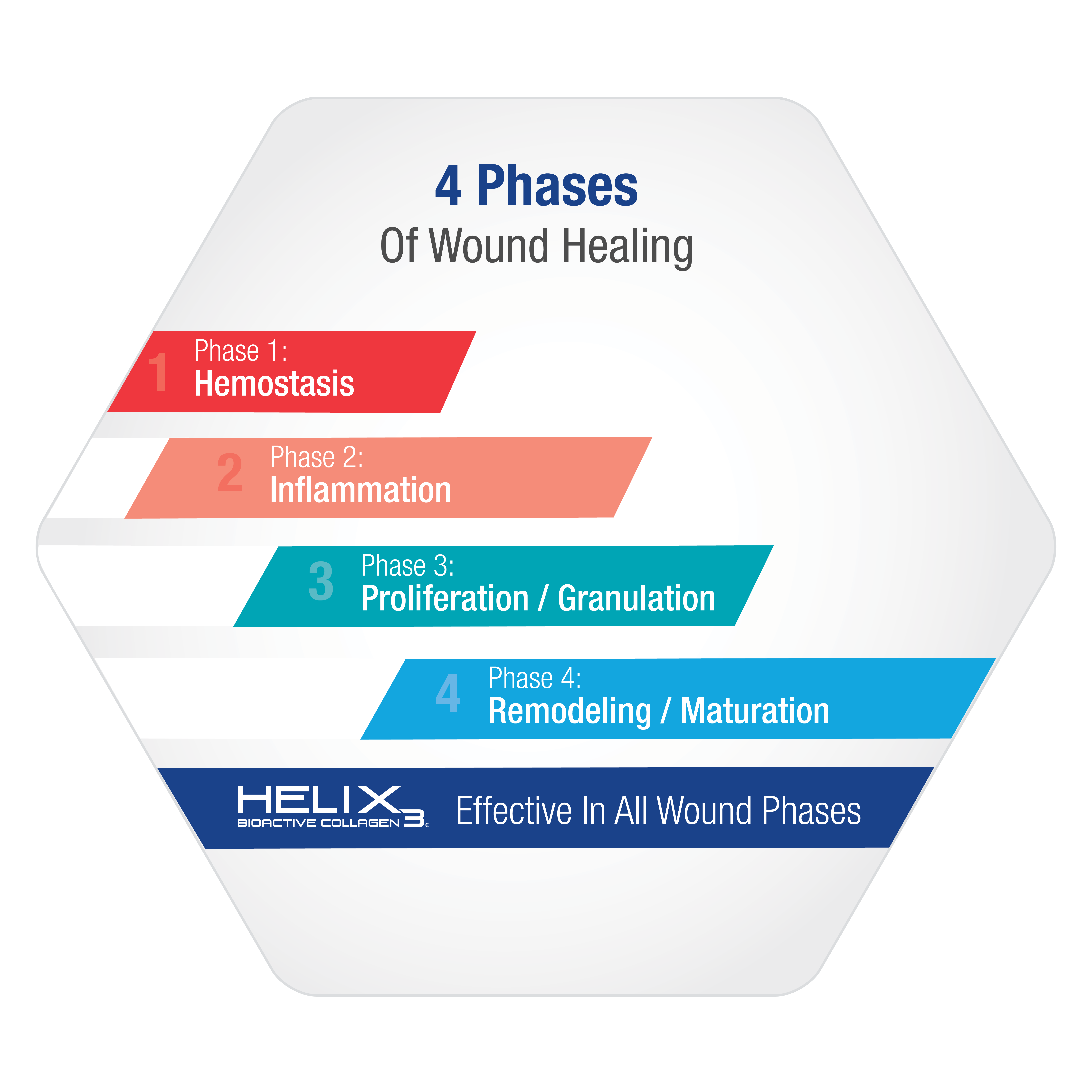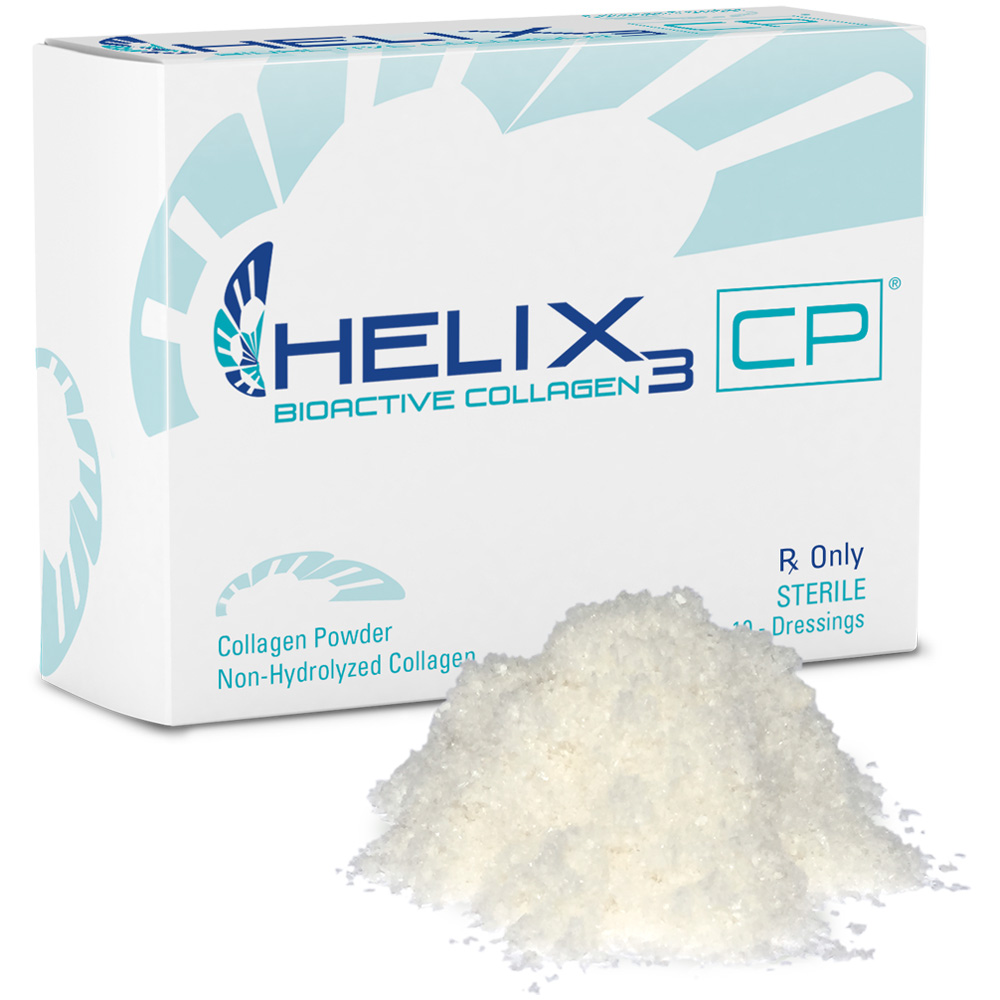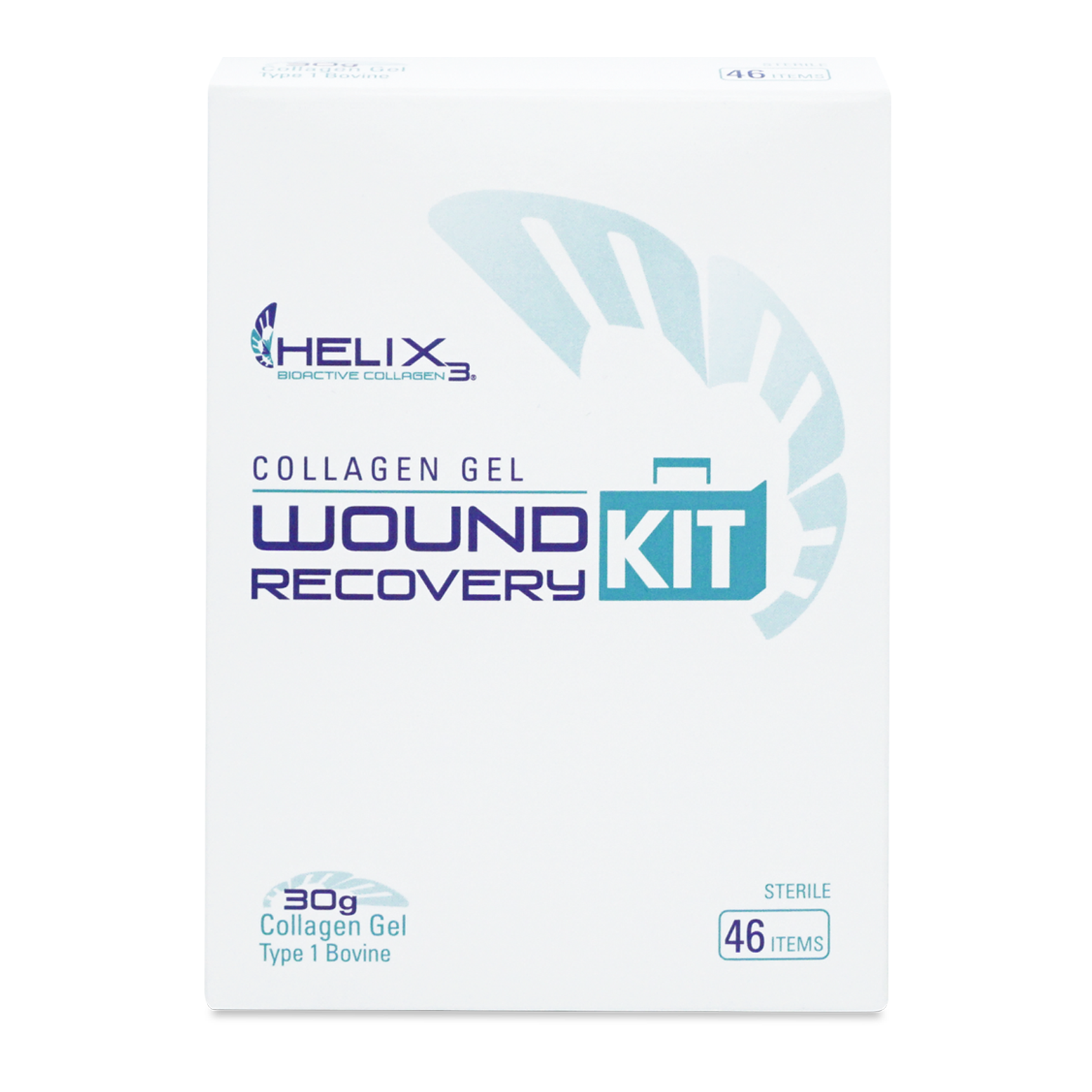Collagen’s Role in Wound Healing
Collagen plays a critical role in all phases of wound healing.
• Collagen creates the greatest physiological interface between the wound surface and the environment, making it the logical choice for surgical wounds.*
• Collagen enhances the wound contracture and cellular migration, essential for wound healing.
• Epithelialization and wound contraction occur during the process of proliferation, angiogenesis, collagen deposition, and granulation tissue formation.
• Collagen encourages fibroblast production and stimulates new tissue growth.
Benefits of Non-Hydrolyzed Collagen
HELIX3 Bioactive Collagen consists of 100% Type 1, non-hydrolyzed bovine collagen, retaining up to 10 times more native helical protein structure. This allows for better molecule stability, necessary for the extracellular matrix (ECM) to form and promote granulation tissue development. When hydrolyzed, the native tropocollagen structure of collagen is broken down into its component amino acids—Glycine, Proline, and Hydroxypoline. Because the bonds of these proteins have been chemically severed, the body must expend unnecessary energy to reassemble the collagen structure before scaffolding can begin, delaying the healing process.
Native Tropocollagen

Denatured/Hydrolyzed Collagen

Experience the HELIX3 Advantage






